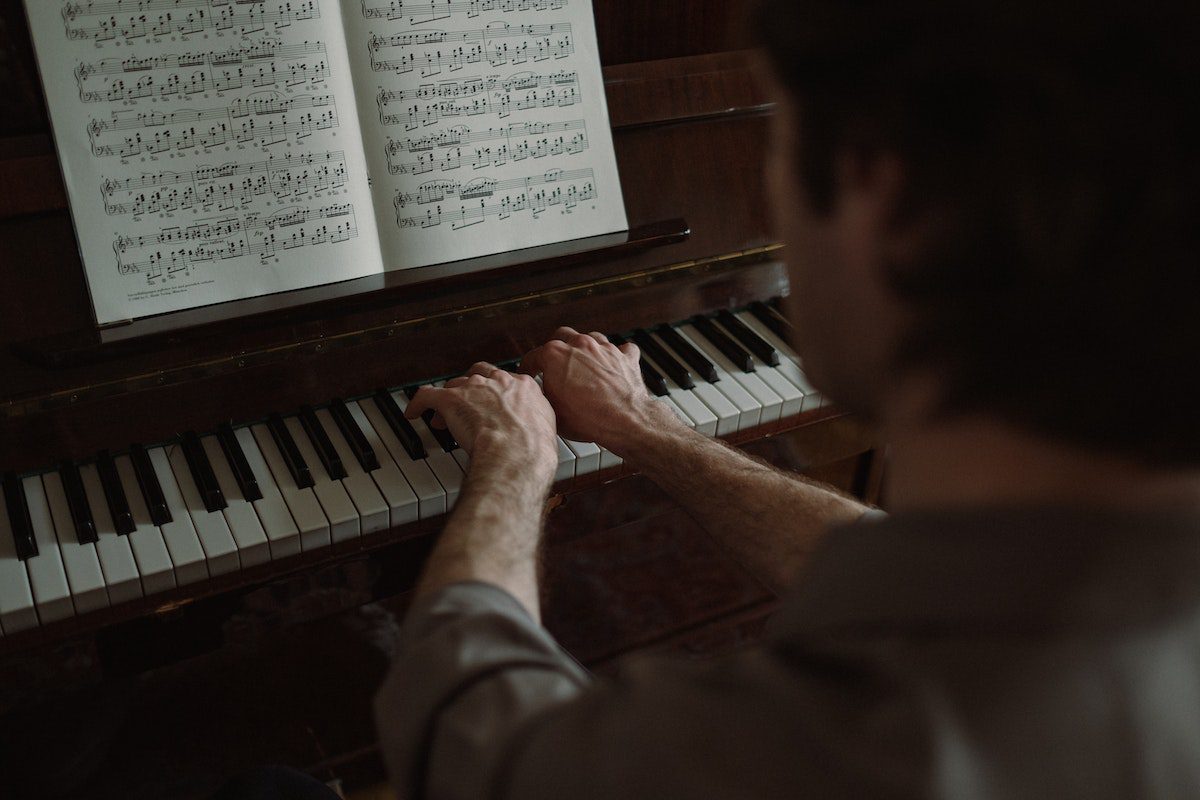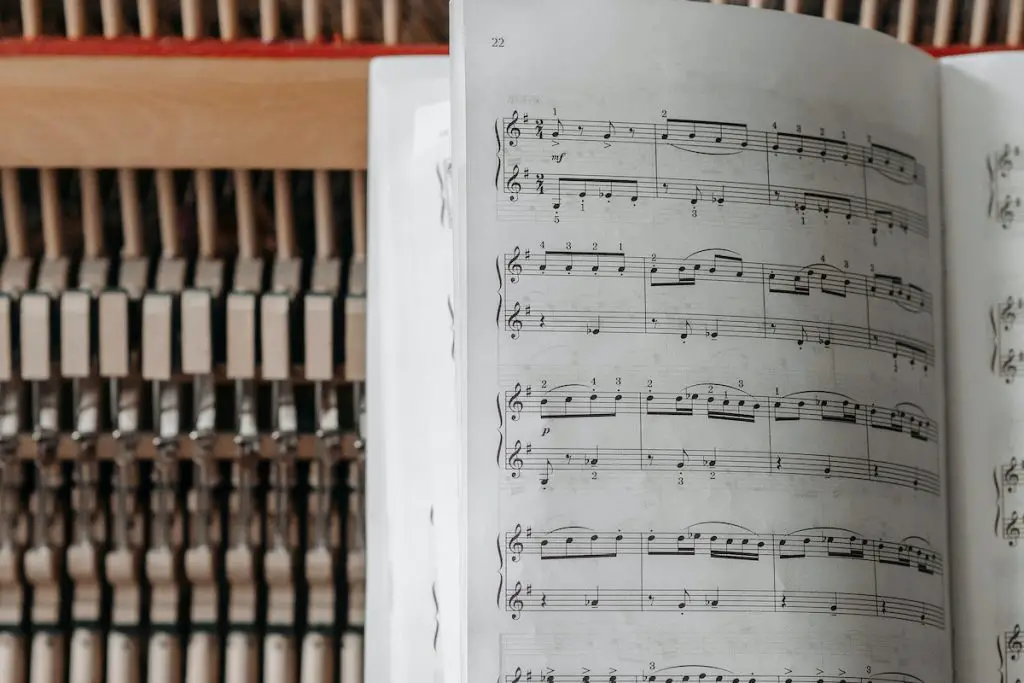Have you ever heard the term “grave tempo” before and wondered what it means? Well, let me tell you – this type of tempo has an important role to play in music composition and performance. And if you want to dive into a musical realm that will captivate your soul and make time stand still, keep reading as we explore what grave tempo is, its uses in music, and its role in music composition.
What is grave? Grave is the slowest tempo in music, characterized by its solemn and weighty atmosphere. It creates a sense of deep reflection and intensity, drawing listeners into a realm where time seems to suspend.
What is grave tempo music?
Grave is a term used in music to describe the slowest tempo possible. It sets the stage for a contemplative and profound musical experience. When you encounter a piece marked “grave,” you can expect a deliberate and measured pace that evokes a sense of gravity and seriousness.

Grave tempo demands that we slow down and fully immerse ourselves in the music. It captures our focus and compels us to listen intently, allowing each note to resonate and linger in our ears. The deliberate slowness cultivates a contemplative and reverential atmosphere.
It gives the music a sense of weight, allowing emotions to unfold gradually, like a captivating story unfolding in slow motion. Grave tempo is often associated with emotions such as sadness, longing, and introspection. It provides a canvas for expressing profound human experiences and allows listeners to connect with their own feelings on a deeper level.
AKAI Professional MPK Mini MK3

AKAI Professional MPK Mini MK3
How slow is the grave tempo?
Grave tempo is typically played at around 60-80 beats per minute (BPM). At this speed, each note is given time to breathe and creates a feeling of tension that builds as the piece progresses. The slower pace also allows musicians to express their emotions more deeply than they could with faster tempos. By emphasizing long notes and sustaining chords, musicians can create a powerful atmosphere that will linger with you long after the song ends.
What are some examples of grave tempo in music?
Throughout history, composers have utilized grave tempo to convey a wide range of emotions and narratives. From the somber and majestic tones of classical compositions to the evocative soundtracks of contemporary films, the grave tempo has played a pivotal role in shaping musical experiences. Here are some notable examples of music with grave tempo:
- Gustav Mahler’s Symphony No. 5: The first movement of this monumental symphony is marked “Trauermusik” (funeral music) and features a profound and introspective grave tempo that sets a mournful and contemplative tone.
- Hans Zimmer’s “Time” from the film Inception: In this hauntingly beautiful composition, the deliberate and measured pace of grave tempo intensifies the emotional impact, making it an unforgettable musical moment.
- Chopin’s Nocturne No. 2 Opus 9-2 creates an atmosphere of introspection with its melancholic melodies accompanied by tranquil harmonies at a slow pace.
Home recording studios provide musicians and music producers with the freedom to experiment and explore different tempos. By incorporating grave tempo in your recordings, you can infuse your music with a profound sense of emotion and create an atmosphere that resonates deeply with your listeners.
What are some techniques used in grave tempo?
To fully harness the impact of grave tempo, musicians, and composers employ various techniques to enhance the musical experience:

- Instrumentation and arrangement choices: Selecting instruments with rich and resonant qualities, such as low strings or deep brass, can amplify the impact of grave tempo. Similarly, careful arrangement decisions, such as using wide intervals or utilizing sustained notes, can further emphasize the weight and solemnity of the music.
- Melodic and harmonic considerations: Composers use melodies that embrace spaciousness and contemplation, often employing long note durations and deliberate melodic intervals. Harmonically, they may opt for chords that possess a sense of depth and emotional richness, reinforcing the overall impact of the music. Intervals such as minor 6ths or major 7ths can enhance the expressiveness of the music.
- Harmonic Depth: Choose harmonies that complement the slow and reflective nature of the grave tempo. Rich and complex chords can evoke a profound emotional response in the listener.
- Role of dynamics and articulation: Skillful use of dynamics and articulation can greatly enhance the expressive power of grave tempo. Controlled and deliberate changes in volume and articulation help shape the emotional arc of the music, adding nuance and depth to each musical phrase. Pay attention to articulation details, such as legato (smooth and connected) or staccato (short and detached) playing.
To make the most of grave tempo in your own musical endeavors, here’s a handy table of dos and don’ts to keep in mind:
| Dos | Don’ts |
|---|---|
| Experiment with spacious melodies | Rush through the music |
| Utilize rich and resonant instrumentation | Overuse fast, staccato passages |
| Build tension through deliberate pacing | Neglect dynamics and articulation |
| Embrace expressive dynamics | Sacrifice musicality for the sake of slowness |
| Focus on creating a contemplative atmosphere | Underestimate the emotional impact of grave tempo |
Frequently asked questions (FAQ)
Here are some commonly asked questions about grave tempo and its impact on music production, home studio recording, and audio engineering:
Can I use grave tempo in any genre of music?
Absolutely! Grave tempo can be employed in various genres, including classical, film scores, contemporary music, and more. It adds a layer of depth and emotional intensity, regardless of the musical style.
How do I balance the slow pace of grave tempo with keeping the music engaging?
Balancing the slow pace of grave tempo is crucial to maintain listener engagement. Focus on incorporating dynamic contrasts, expressive articulation, and compelling melodic lines to create movement and tension within the music, ensuring a captivating experience for your audience.
Are there any specific instruments that work exceptionally well with grave tempo?
While grave tempo can be achieved with any instrument, certain instruments are particularly effective in enhancing its impact. Instruments with rich low-end tones, such as cellos, double basses, and low brass, can add a profound and resonant quality to the music, further complementing the somber atmosphere of grave tempo compositions.
Conclusion
And that’s a wrap on exploring the captivating world of grave tempo! We’ve delved into its emotional impact, atmospheric qualities, techniques, and its relevance in music production. Did I cover everything you wanted to know? Let me know in the comments section below. I read and reply to every comment. If you found this article helpful, share it with a friend, and check out my full blog for more tips and tricks on music production and audio engineering. Thanks for reading and keep on creating harmonious masterpieces!
Key Takeaways
This article covered the topic of grave tempo, exploring its impact on music production, home studio recording, and audio engineering. Here are some key takeaways:
- Grave tempo is the slowest tempo in music, creating a solemn and contemplative ambiance.
- It is typically played at around 60-80 BPM and is often used in classical pieces, jazz, and film scores for dramatic scenes.
- Its purpose is to evoke certain emotions within the listener and to add texture and depth to the music.
- Techniques such as instrumentation choices, melodic considerations, and dynamics play a vital role in utilizing grave tempo effectively.















